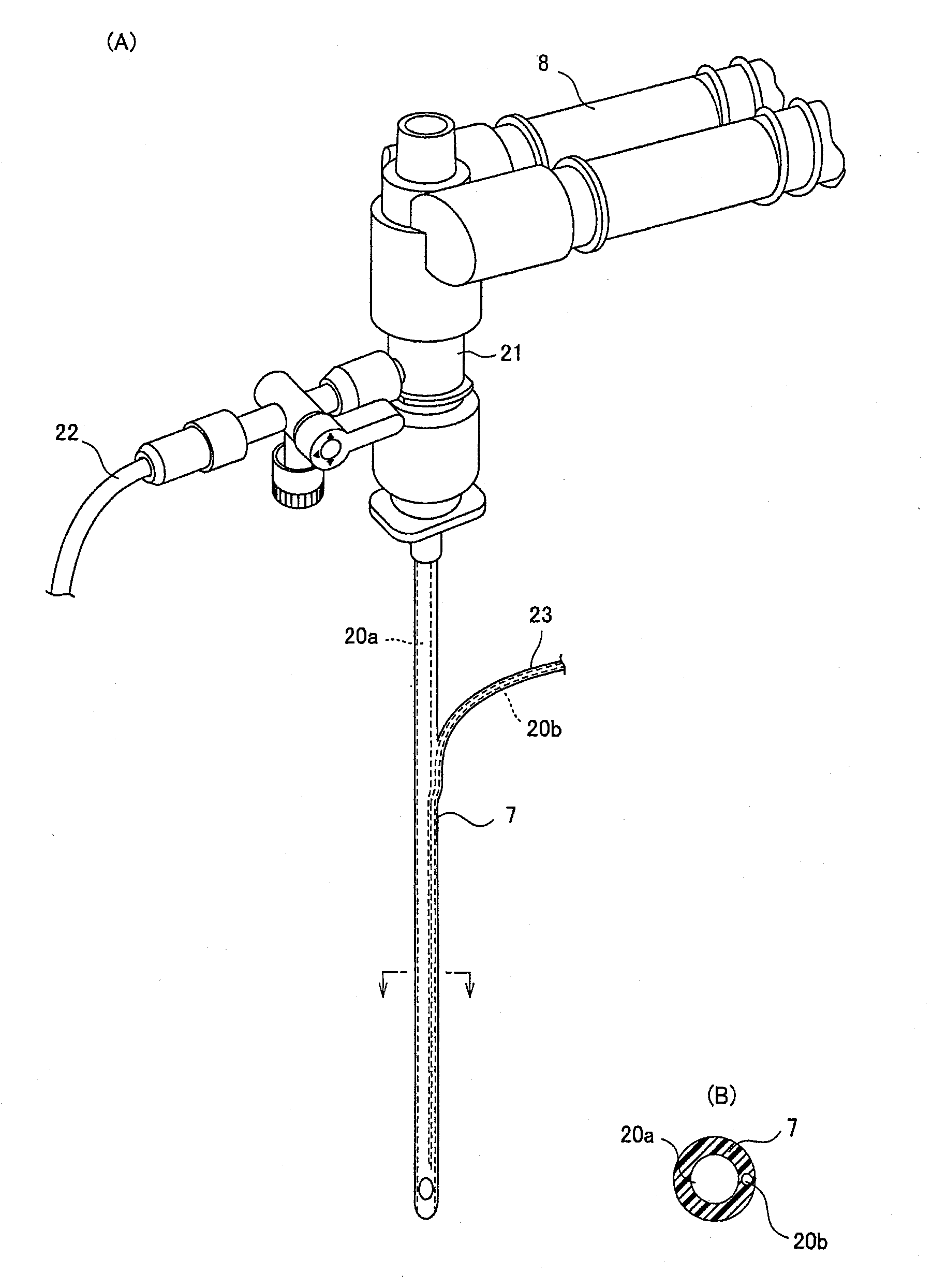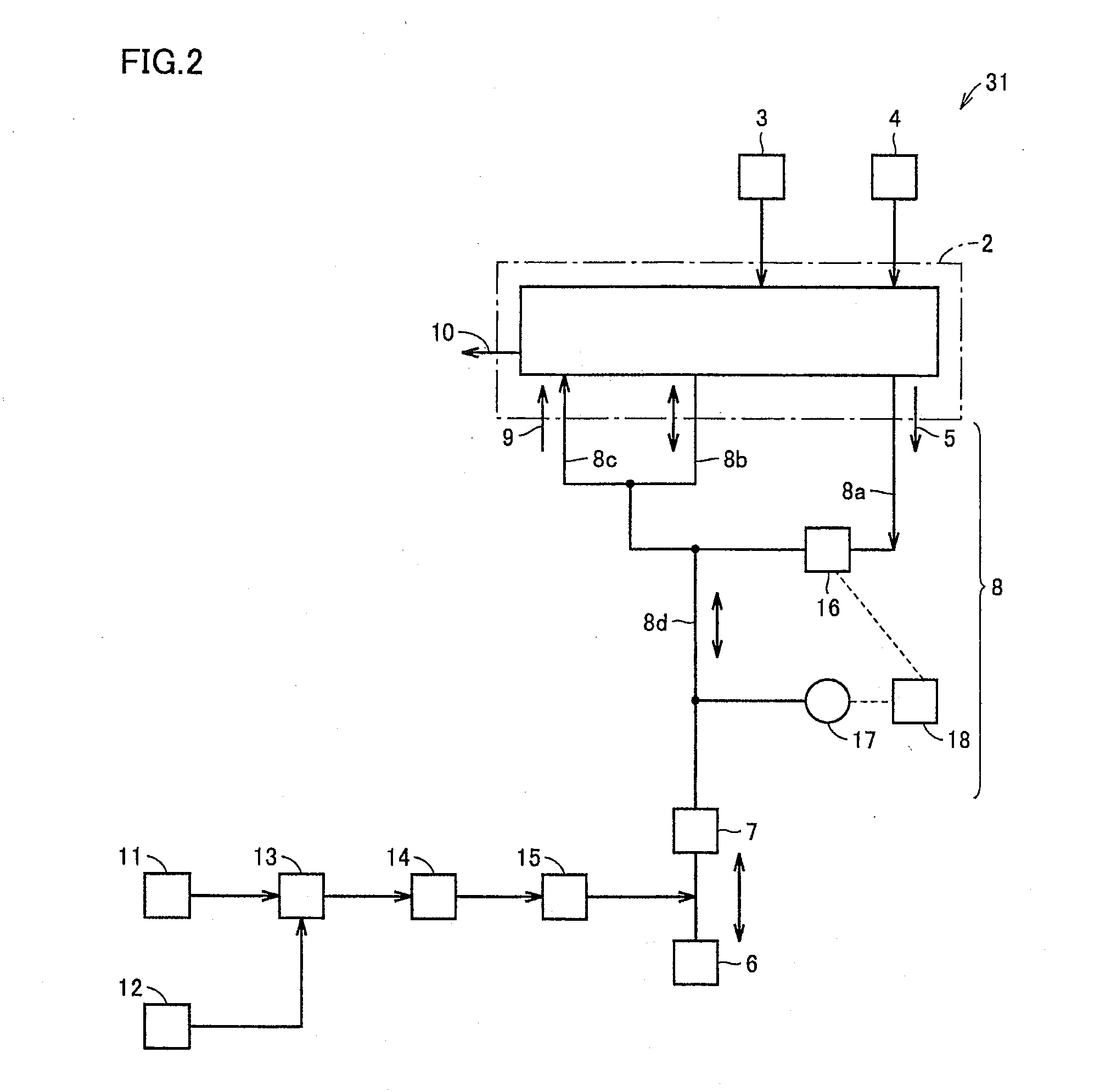Ventilator
a technology of ventilator and lungs, which is applied in the field of ventilator, can solve the problems of poor efficiency of gas exchange and cracks in the connection between the cells of the lungs, and achieve the effect of reducing the amount of medical gas consumed
- Summary
- Abstract
- Description
- Claims
- Application Information
AI Technical Summary
Benefits of technology
Problems solved by technology
Method used
Image
Examples
experimental example 1
[0059]First, it was verified beforehand whether or not the helium and oxygen inhalation therapy performed using the method disclosed in NPD 2 (hereinafter referred to as “method A”) (Comparative Example 1) is more excellent than the conventional ordinary (artificial) ventilation method, that is, HFO (artificial) ventilation not using a mixed gas of helium and oxygen (hereinafter referred to as “method B”) (Comparative Example 2).
[0060]Here, FIG. 12 is a view schematically showing a ventilator 101 in a case where the helium and oxygen inhalation therapy is performed using method A. In ventilator 101 shown in FIG. 12, helium 103 and oxygen 104 are mixed by a mixer 105 and supplied as a mixed gas to a main body 102 of the HFO ventilator. Compressed air 106 is also supplied to main body 102. From main body 102, the mixed gas of helium 103 and oxygen 104 is supplied to a respiratory circuit as an inhalation gas 107. Although compressed air 106 is also supplied to main body 102, compresse...
experimental example 2
[0077]HFO (artificial) ventilation which supplied a mixed gas of helium and oxygen from a branch at a location partway along extratracheal tube path 8 using ventilator 1 in accordance with the present invention in the example shown in FIG. 1 (hereinafter referred to as “method C”) (Example 1), and method A described above (Comparative Example 1) were alternately performed, to investigate changes in the partial pressure of oxygen in the arterial blood and the partial pressure of carbon dioxide in the arterial blood of rabbits, and verify whether method C has an effect equal to or more than that of method A.
[0078]In method C, the concentration of oxygen supplied to main body 2 was set to 50%, as in method B described above. In method C, adjusted helium 11 and oxygen 12 identical to those described above for method A were used and adjusted by mixer 13 to have a helium concentration of 50% and an oxygen concentration of 50%. Thereafter, the flow rate was adjusted by flow controller 14 (...
experimental example 3
[0093]HFO (artificial) ventilation which supplied a mixed gas of helium and oxygen from a leading end of intratracheal tube path 7 using ventilator 31 in accordance with the present invention in the example shown in FIG. 2 (hereinafter referred to as “method D”) (Example 2), and method A described above (Comparative Example 1) were alternately performed, to investigate changes in the partial pressure of oxygen in the arterial blood and the partial pressure of carbon dioxide in the arterial blood of rabbits, and verify whether method D has an effect equal to or more than that of method A.
[0094]In method D, the concentration of oxygen supplied to main body 2 was set to 50%, as in method B described above. In method D, adjusted helium 11 and oxygen 12 identical to those described above for method A were used and adjusted by mixer 13 to have a helium concentration of 50% and an oxygen concentration of 50%. Thereafter, the flow rate was adjusted by flow controller 14 (area flow meter nam...
PUM
 Login to View More
Login to View More Abstract
Description
Claims
Application Information
 Login to View More
Login to View More - R&D
- Intellectual Property
- Life Sciences
- Materials
- Tech Scout
- Unparalleled Data Quality
- Higher Quality Content
- 60% Fewer Hallucinations
Browse by: Latest US Patents, China's latest patents, Technical Efficacy Thesaurus, Application Domain, Technology Topic, Popular Technical Reports.
© 2025 PatSnap. All rights reserved.Legal|Privacy policy|Modern Slavery Act Transparency Statement|Sitemap|About US| Contact US: help@patsnap.com



